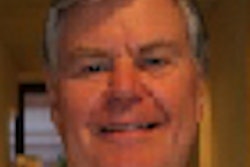
Editor's note: This article first appeared on the website Dental Intelligence on April 18, 2011. Reprinted with permission of William T. Brown, DDS.
Shifting a dental practice from a series of techniques to a process that involves a dental team in a human setting required a new system we call "comprehensive oral healthcare" (COHC). The five pillars of a COHC practice are:
- Humanistic
- Biologic
- Diagnostic
- Therapeutic
- Philosophy
The second of the pillars is "biologic" -- the scientific basis for all professional care of the patient. Biologic considerations start with envisioning the mouth as an organ system rather than an appendage separated from the rest of the human anatomy.
In this approach, normal periodontal tissue becomes the gold standard for the determination of any changes in the mouth. Subtle variance from normal determines the degree of pathology. Understanding the basic biology of bacterial plaques and biofilms gives the practitioner the ability to communicate to the patient the concepts of disease process control.
One of the major stumbling blocks in the preventive movement in the 1970s was the tendency of dentists to teach a technique of flossing and brushing rather than an educational system of interrupting a disease process. Robert Barkley, DDS, the father of preventive dentistry, worked with dental schools, teachers, and an array of futurists to hone his message to dentists regarding prevention. Instead of a flossing and brushing moment, he wanted it to be a teaching moment.
But Dr. Barkley began to realize that his goal of teaching patients to be accountable for their oral health based on a disease control program had morphed into yet another technique tacked onto a traditional restorative practice, without regard for the biologic considerations. While dentists left Dr. Barkley's lectures energized with his message, they were often disappointed with the results in their practices because their "control programs" weren't based on biologic concepts and there were no dental metrics to determine patient progress.
I experienced these problems when I initiated a disease control program in my practice. I soon realized that I needed to have a better understanding of the disease process and use normal periodontal tissues as the frame of reference for oral health. It was apparent that if a patient maintained normal periodontal tissues, they would stop decay, except in unmanageable areas.
Patients also need to be educated on understanding the biology of their enemy: bacterial plaque. Distilling the scientific information on the progression of oral disease so it is easily understandable and repeatable by patients is key to long-term success of the control program.
Picture a world where dentists are the entry point to the healthcare system. Since dentists see their patients two or more times per year, they have a better opportunity for monitoring systemic health issues. Think of the relationships between periodontal disease and cardiovascular disease, diabetes, and preterm and low-birth-weight babies. There is a wide range of salivary diagnoses -- including proteins, nucleic acids, hormones, pharmaceuticals, and pathogens -- that can be measured in the dental office. The rapid detection and screening of biomarkers for caries, periodontal disease, osteoporosis, infectious diseases, and cancer could be part of routine dental assessment.
An article in the April 2011 Journal of the American Dental Association explores the link between tooth loss and cognitive function (Vol. 142:4, pp. 379-390). This study is based upon the hypothesis that there is an association between cognitive impairment and poor oral health, with higher levels of cognitive impairment in populations with worse oral health. The authors note a relationship has been established between poor oral health and many other diseases such as diabetes, cardiovascular disease, stroke, and Alzheimer's disease.
The future of dentistry, in my view, will be cognitive as well as technical. Diagnosis is a major reason for professional education, and it is based on a comprehensive oral examination. It is the highest calling of our profession.
William T. Brown, DDS, practices in Des Moines, IA. He started his blog, Dental Intelligence, in 2010 "to share information and experiences that have fundamentally changed the way dentistry is practiced."
Copyright © 2011 William T. Brown, DDS



















